This is one in a series of posts on the Nikon Z6 and Z7. You should be able to find all the posts about those cameras in the Category List on the right sidebar, below the Articles widget. There’s a drop-down menu there that you can use to get to all the posts in this series; just look for “Nikon Z6/7”. It’s also about the GFX 100, and is in that category, too.
After my testing of the Nikon 24-70 mm f/2.8 Nikkor S showed it to be an outstanding example of the breed, I thought I’d test it against my favorite mildly-wide-to-normal zoom, the Fuji 32-64 mm f/4 G-mount lens. I mounted the Fuji lens on the GFX 100, which gives it a resolution advantage over the Nikkor. The more time I spend with the GFX 100, the less I’m interested in using the GFX 50x cameras, which biased my body choice.
Here’s the scene with some trees 47 meters from the camera:
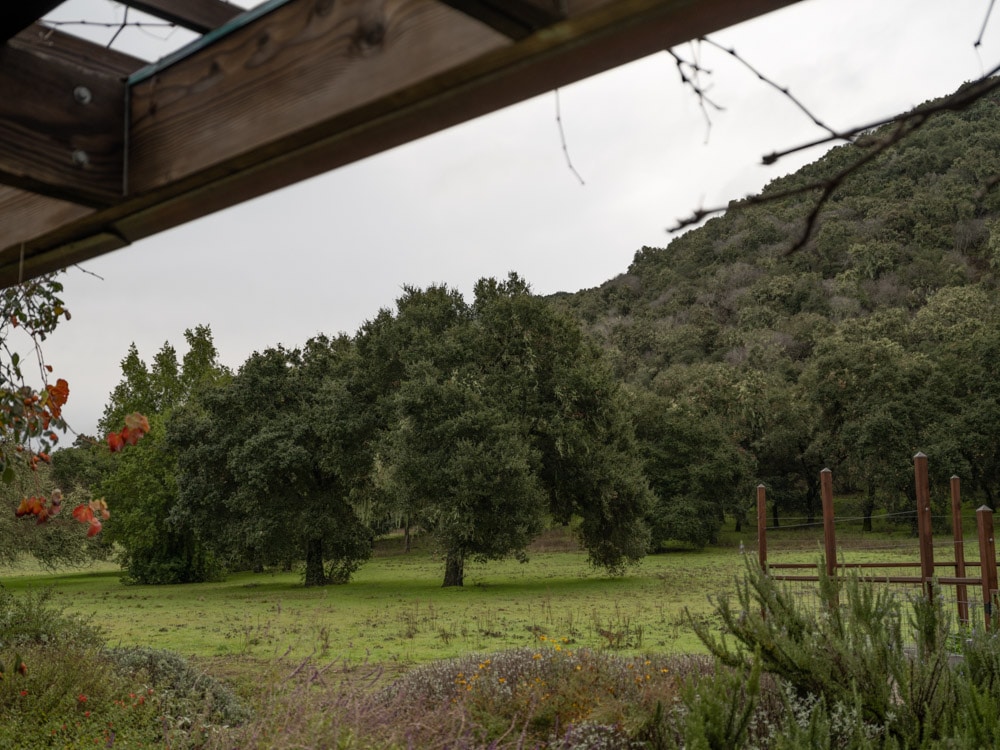
Making three shots for each variation and picking the sharpest, I exposed at base ISO 64 for the Z7, and 100 for the GFX 100. I used AF-S and the pinpoint spot for the Z7, and the small spot for the GFX 100, focusing on the target grove of trees.
Capture conditions were:
- Heaviest RRS legs
- Arca Swiss C1
- 2 second self-timer
- EFCS
- 47 mm for the Fuji, 35 mm for the Nikkor, to keep the vertical field of view constant
Images developed in Lightroom, with default settings except:
- WB set to cloudy
- Exposure to equalize brightness
- Adobe Color Profile
- Sharpening 20, radius 1, detail 0
- Pick the best of three images at each test condition
I did not try to defeat Lightroom’s silent distortion correction.
We’ll look at some tight crops.
If you’ve seen these here before, just jump to the images. If not, I need to spend some time telling you how to interpret them. They’re at roughly 250% magnification, enlarged to 700 pixels high on export from Lightroom. If you just want a rough idea of the differences, just look at the images as displayed in-line in the posts. However, if you wish to compare these images in detail, you should view these images by clicking on them to see the source files, then set your browser for 100% zooming. Even better, download them and make Photoshop stacks.
No matter what you do, these crops are all going to look horrible. I’m blowing them up so much so that they will represent the original file after JPEG’s discrete cosine transform has had its way with them. If you want to get a good idea of what the images would look like printed, get far away from your monitor. No, farther than that. Put a bunch of the images up on the screen and back up until the best one starts to look good. Then look at the others. There’s another reason why these images won’t look like the best thing the camera/lens combination can deliver. They’re demosaiced with Lightroom. Lightroom is not awful, but for a particular image, there are usually better raw processors. I use Lr because it’s a de facto standard, because I know it well, and because it’s got good tools for dealing with groups of images.
Here’s how to use these highly-magnified crops. The dimensions of the Z7 sensor is 8256×5504 pixels. If we make a full-frame print from the Z7 on a printer with 360 pixels per inch native driver-level resolution, like the Epson inkjet printers, we’ll end up with a 23×15 inch (58×39 cm) print. The 317×246 pixel crop you’re looking at will end up 0.8×0.68 inches (2.12×1.74 cm). The Fuji crops are 448×347 since it is a higher-resolution sensor. Let’s imagine that you or your viewers are critical, and will look at the 22×15 inch print from about 18 inches (conventional wisdom is that the distance would be a little greater than that, or 28 inches (the diagonal), but you did buy a high-resolution camera for a reason, didn’t you?).
The next step is dependent on your monitor pitch, which you may or may not know. Turns out, you don’t have to know it. Just take the 250% crops and view then at 1:1. How high are they? Get out your ruler and measure, or just guess. Let’s say they are 6 inches high. 6 inches is about 7 times 0.8, so in order to view the crops the way they’d look from 18 inches on the print is to view them from 7 times as far away, or 10.5 feet.
Everything here scales proportionately. If the image on your screen is bigger than 6 inches, increase your viewing distance by the ratio of your image height to 6 inches. If you think your viewers are going to almost get their nose to that print and look at it from six inches, divide that 10.5 feet by 3, and look at the image on the monitor from three and a half feet away.
Near the center of the frame:
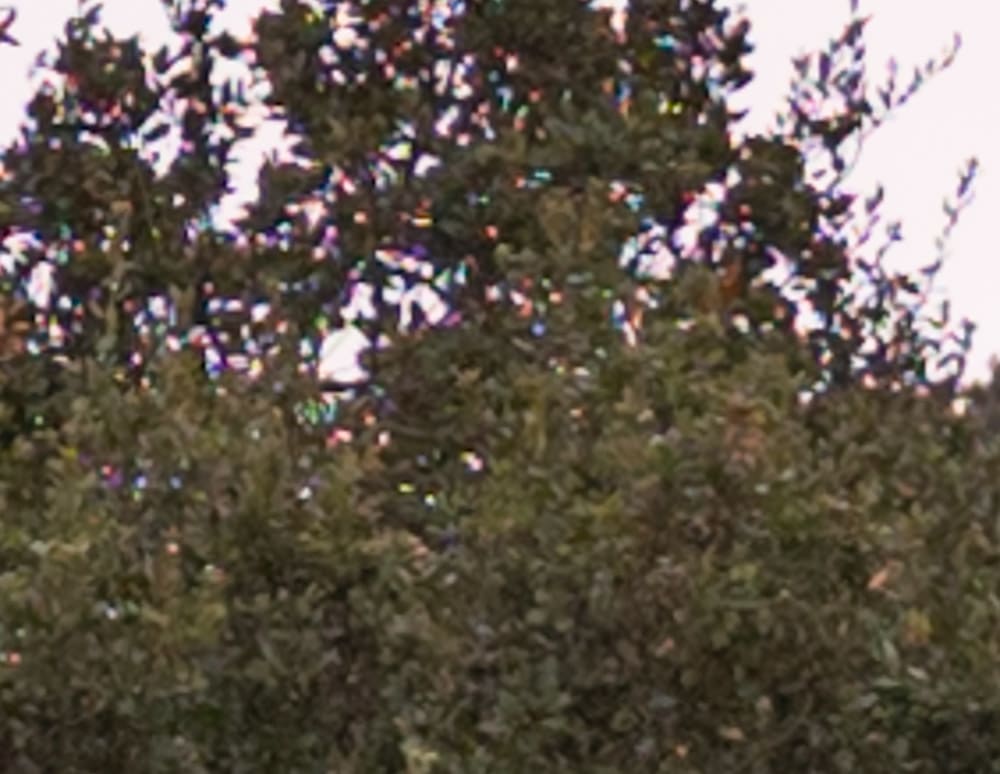
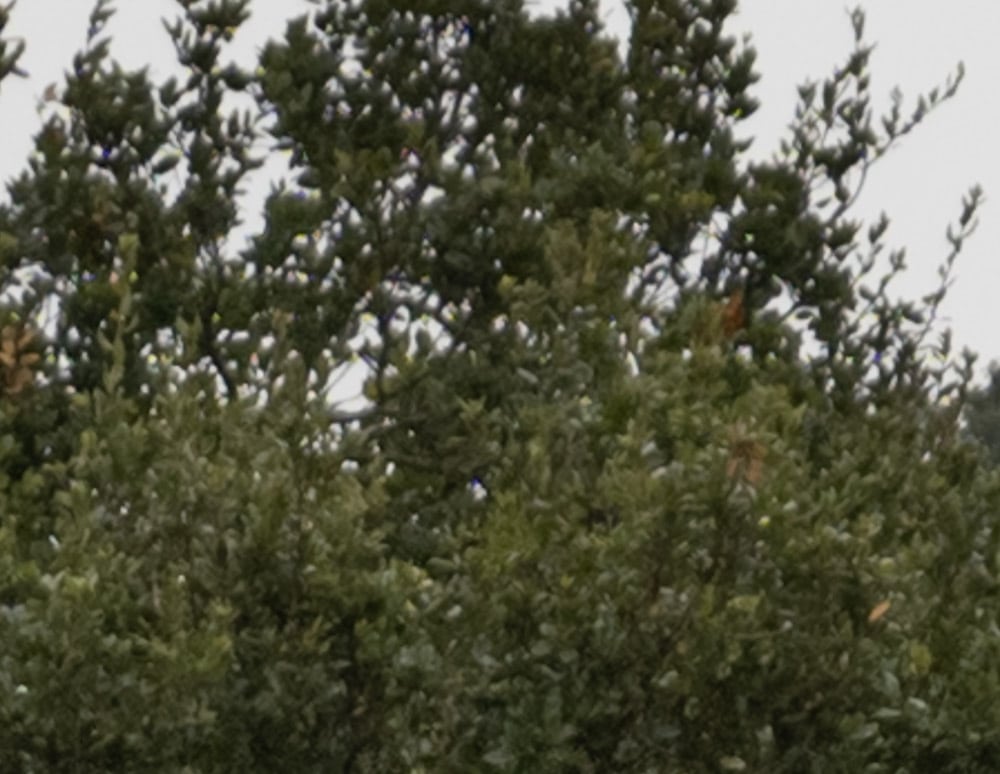
There is more aliasing, and possibly more longitudinal chromatic aberration (LoCA) in the Nikon image. The advantage of the higher-resolution camera is apparent.
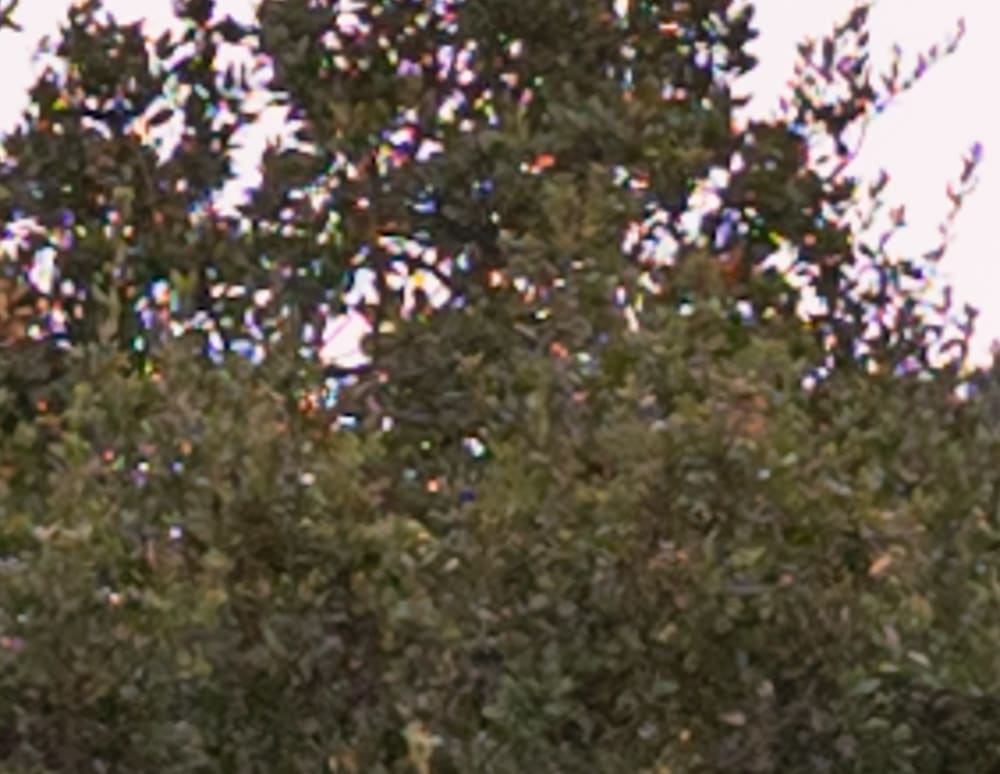

More of same.

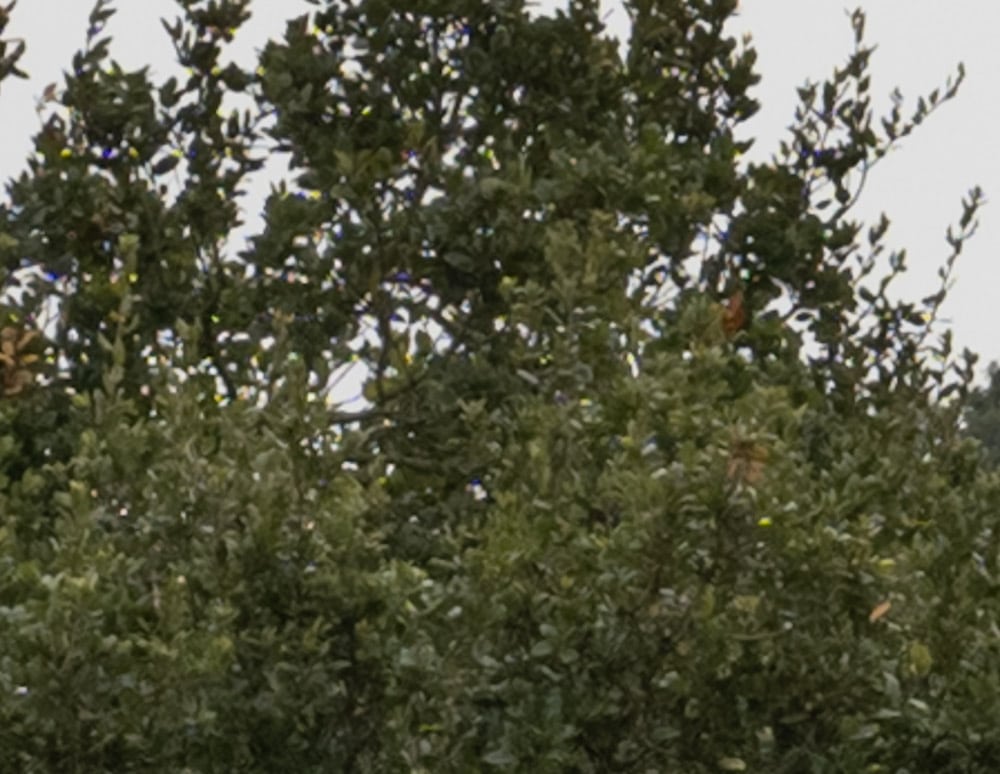
The pattern continues.
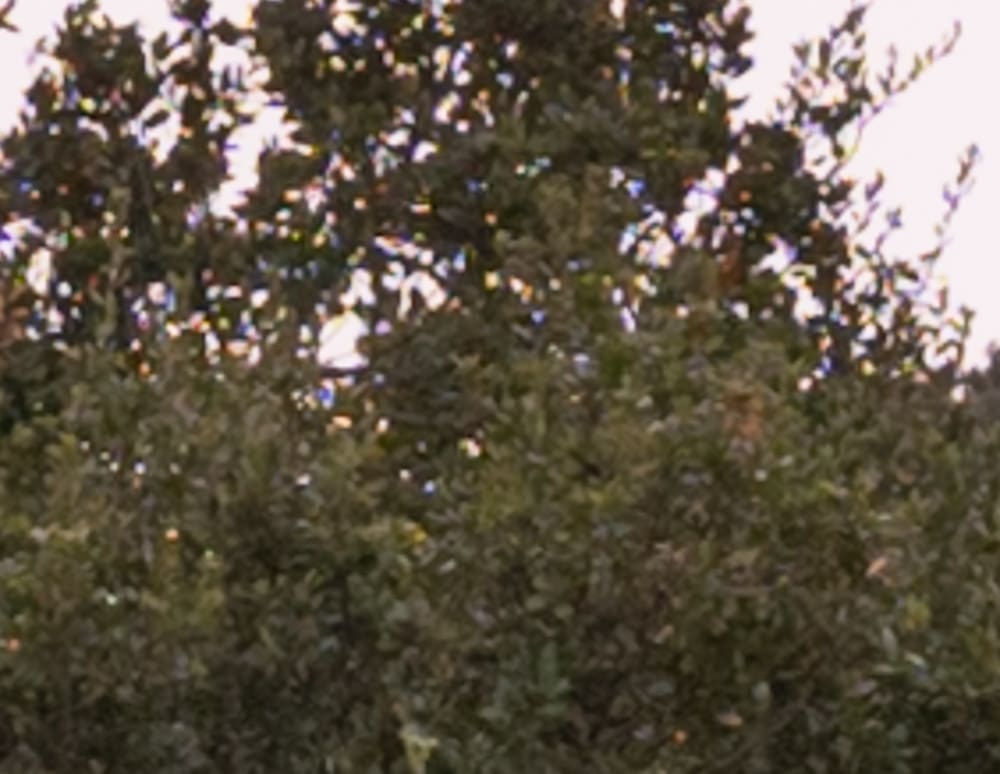
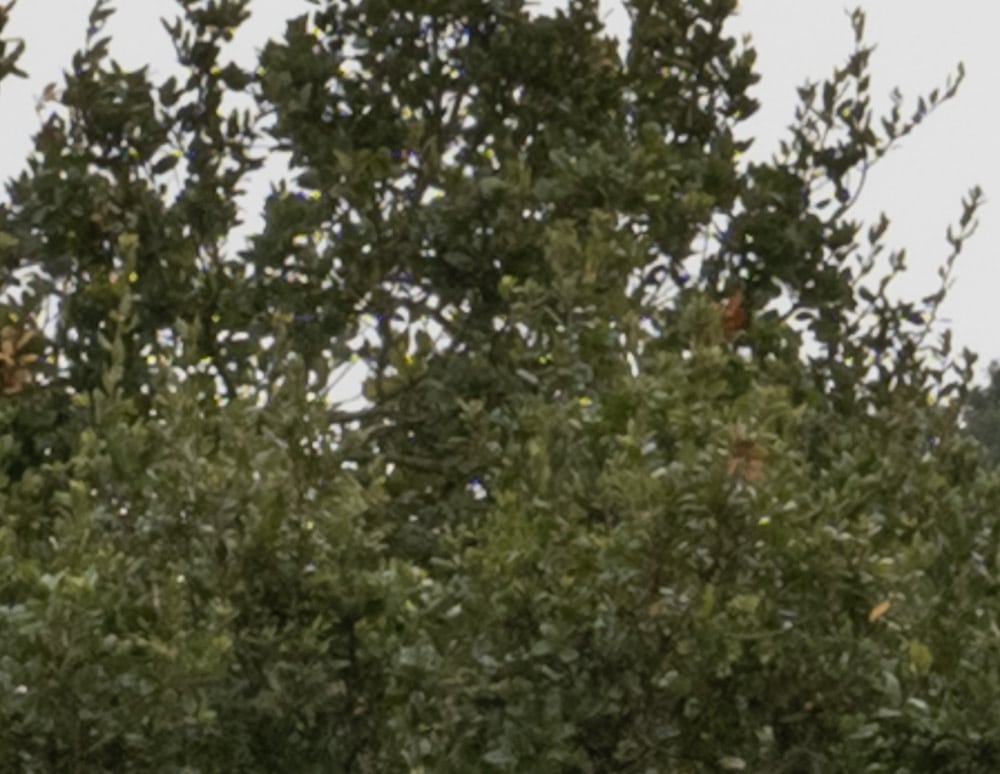
In the upper-right corner:
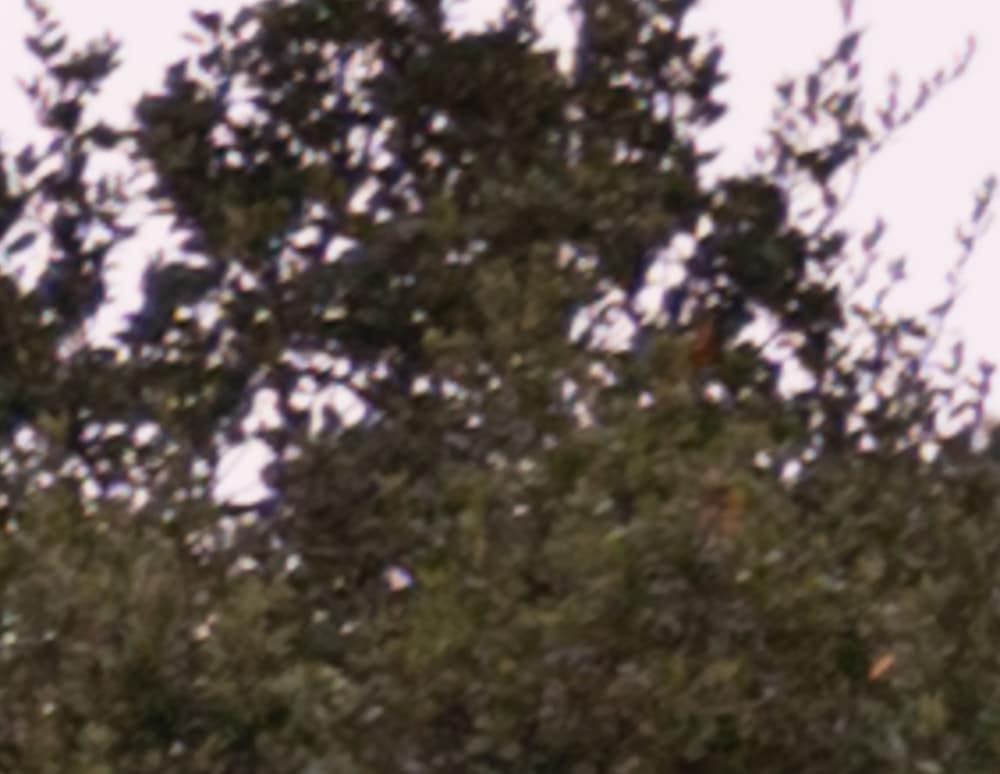
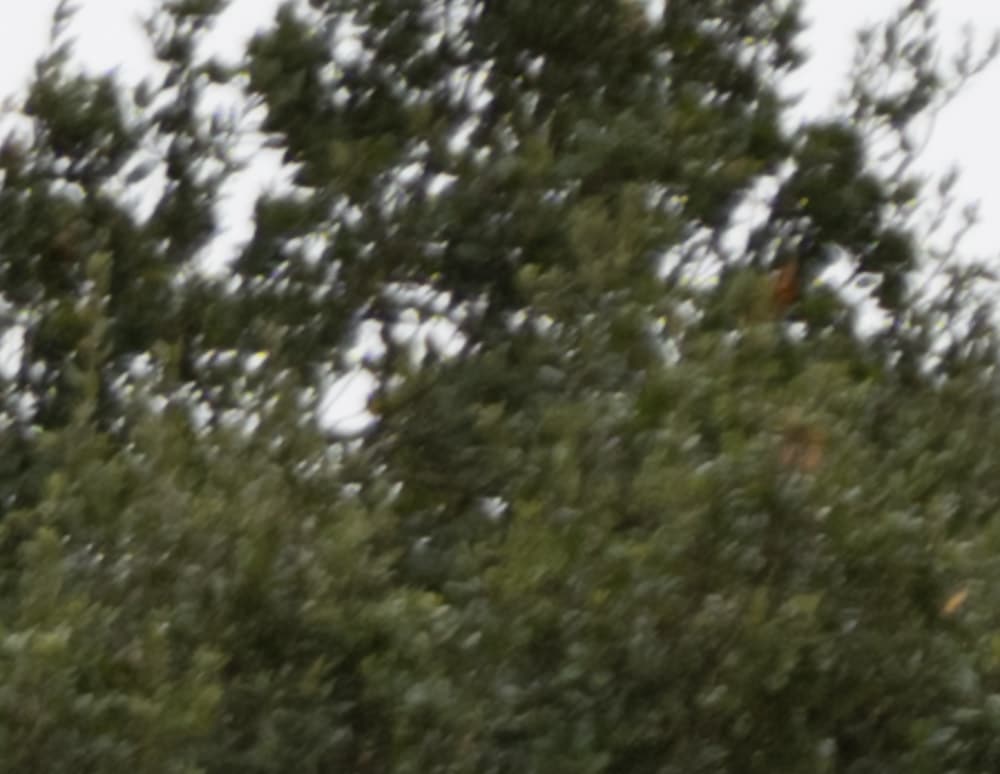
The Nikkor is soft enough in the corner that the aliasing has pretty much gone away, but it is sharp enough that the resolution advantage of the GFX 100 sensor is negated.
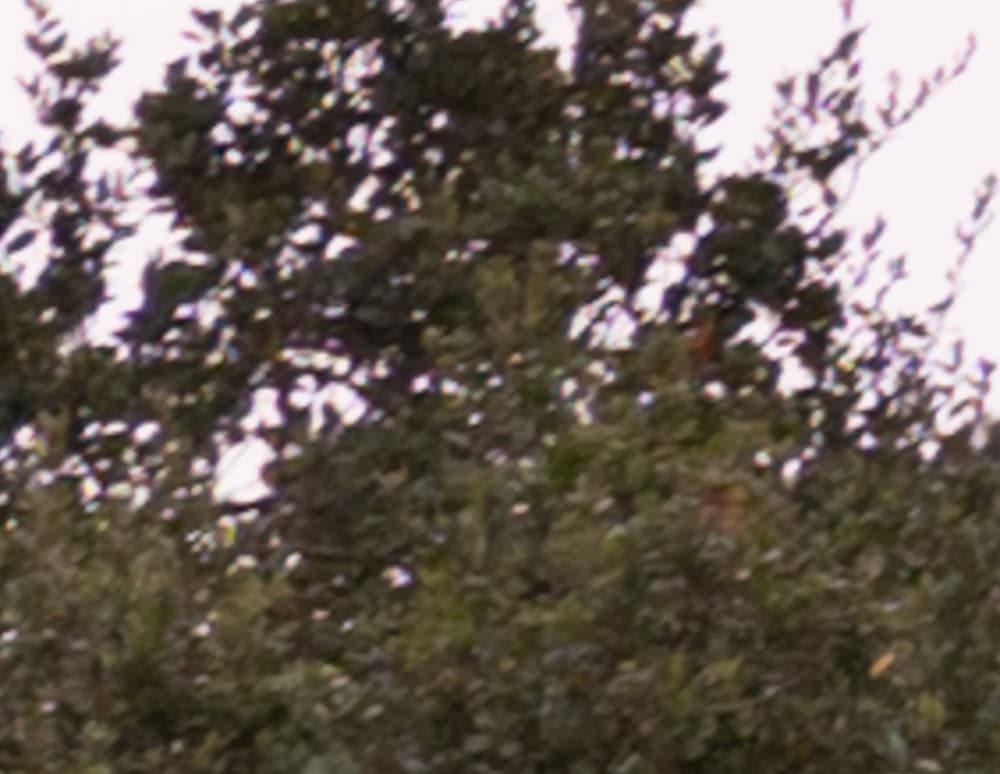
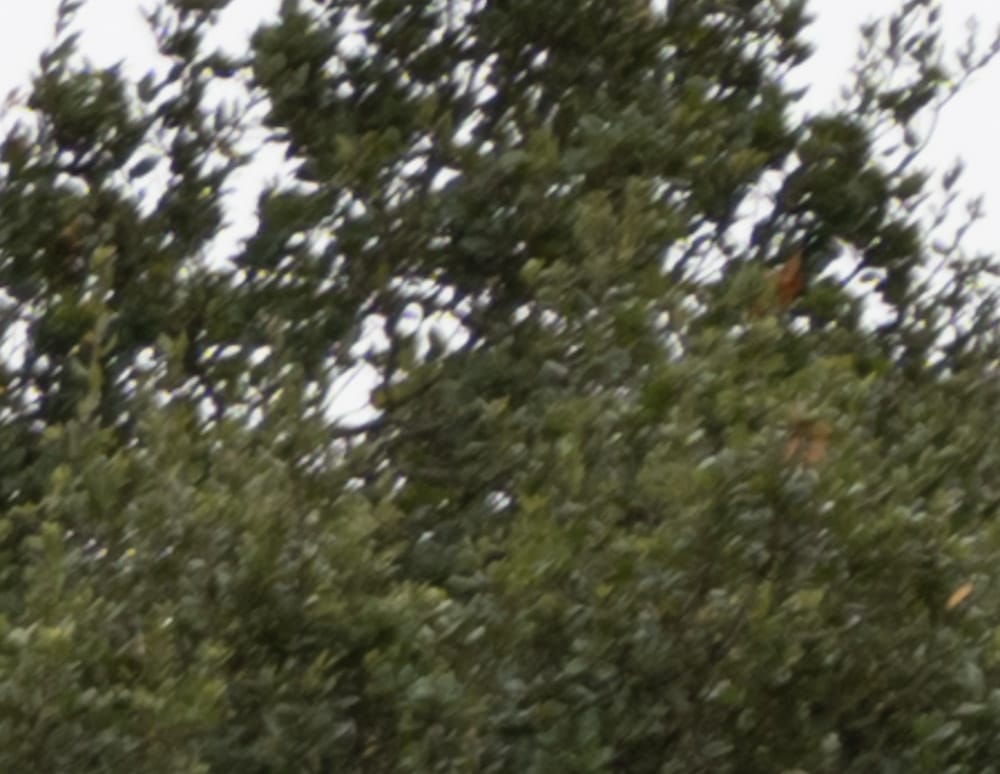
The Fuji has crisped up enough that it is sharper and cleaner than the Nikkor/Z7 combination. There is LoCA visible in the Nikon image.
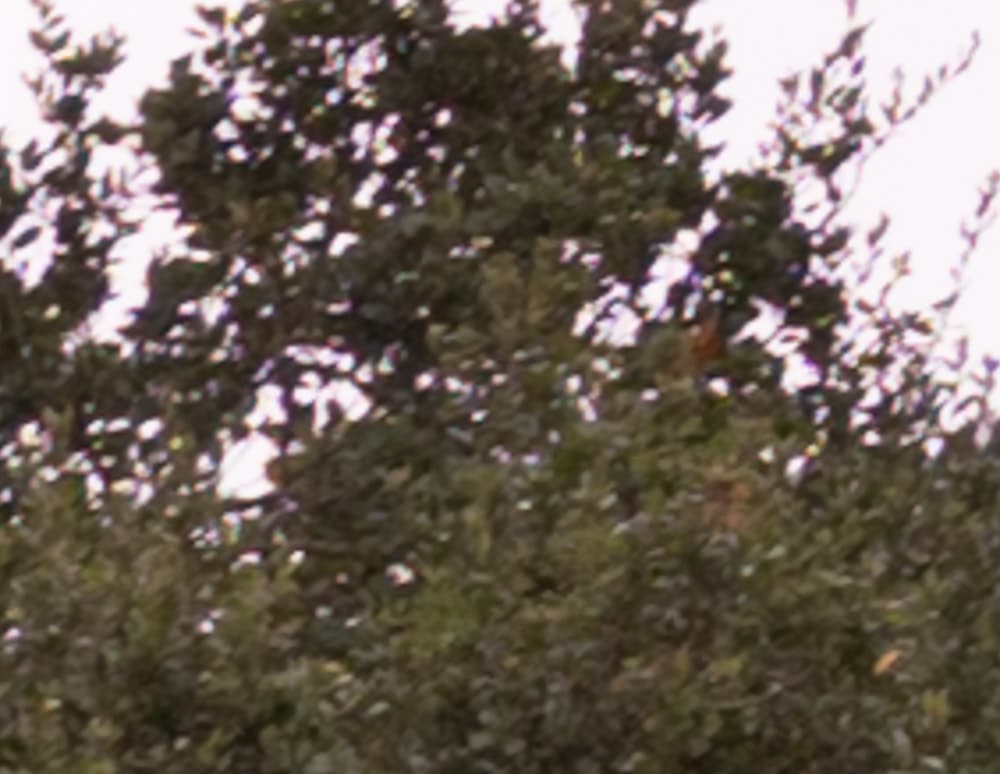
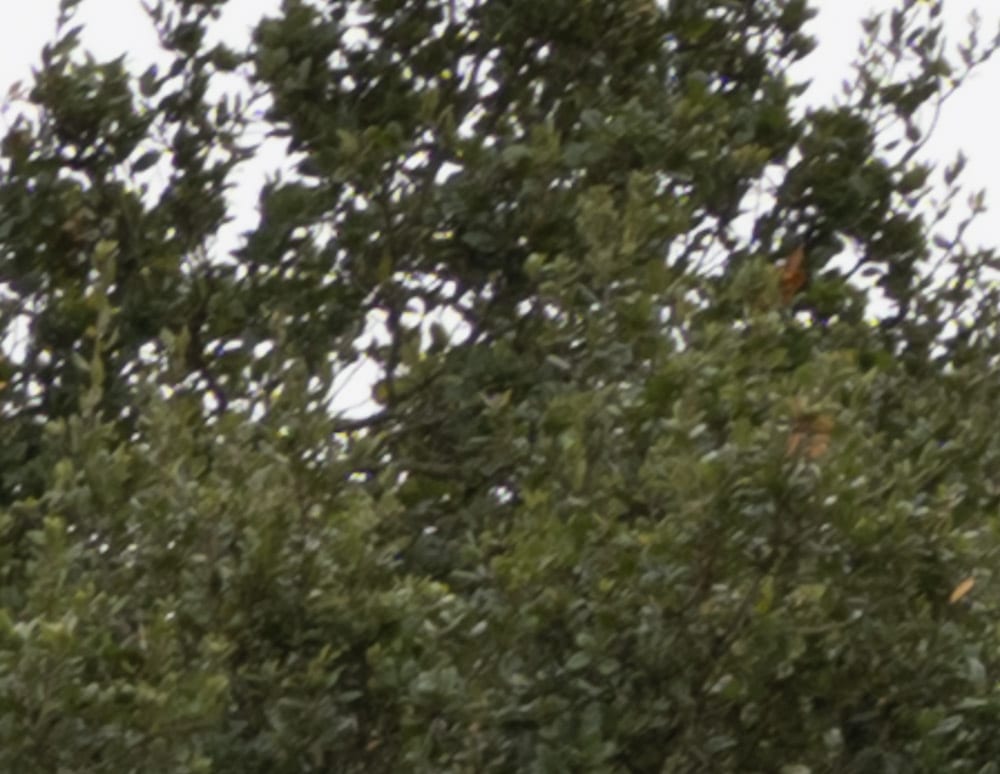
The Fuji look much better.
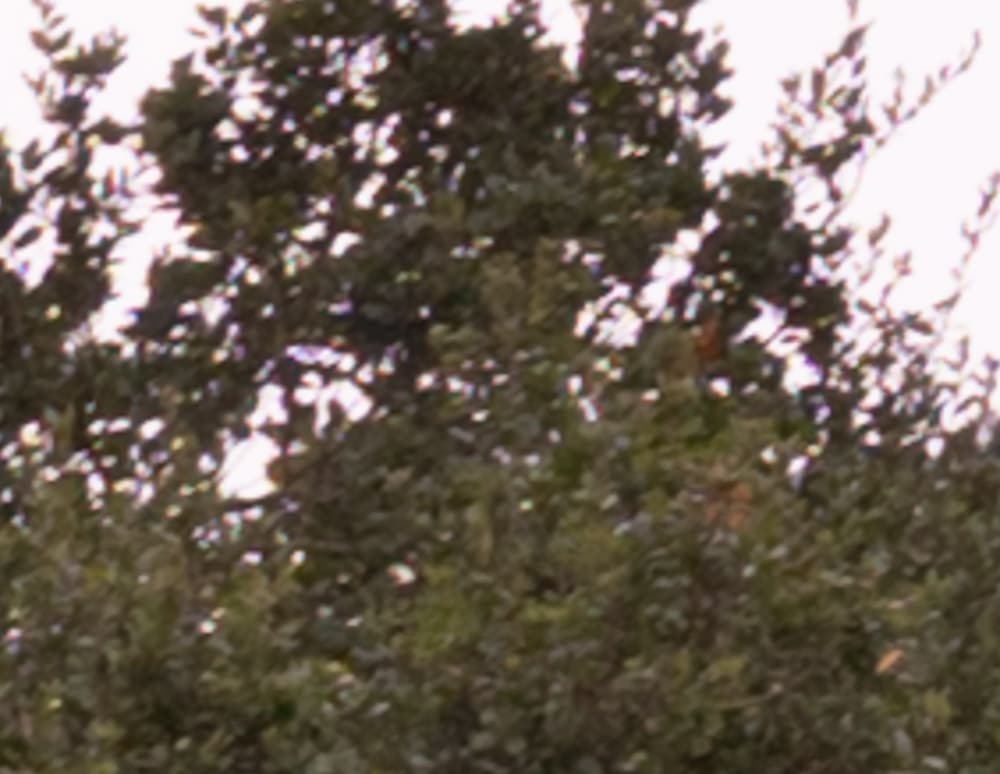
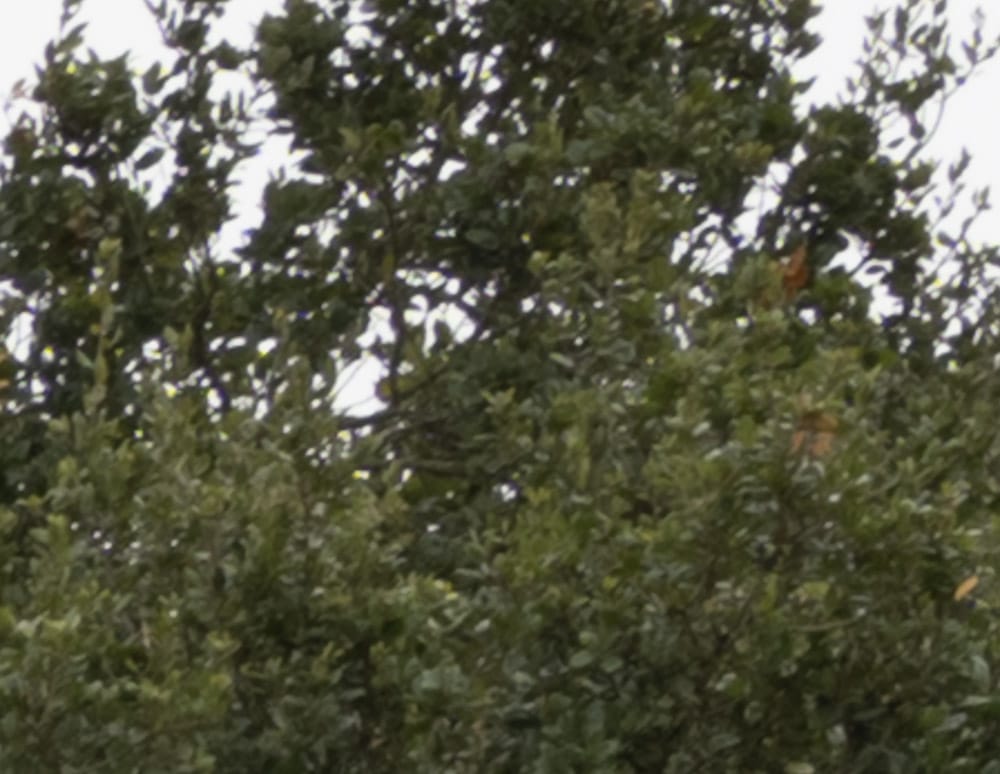
The Fuji combination continues to impress.
David Berryrieser says
Thanks for this. I have been rather curious how the newest line of full frame lenses would stack up against the venerable GF glass. The nikkor is clearly an excellent lens and a step up from the previous generation of full frame DSLR zooms. I would also note that I have found the middle of the zoom range to be the weakest on the 32-64, though it is clearly still excellent.
Phil Lindsay says
Even if the 32-64 is weak in the center range it is still superior (as it should be) to the new Nikon 24-70mm Zoom so why bother with the Nikon lens on a Fuji?
David Berryrieser says
I don’t think anyone is suggesting using the Nikon Z lens on the a Fuji body. I doubt that it is even possible.
Erik Kaffehr says
The amount of color aliasing shows that Nikon needs a camera with a higher resolution sensor than the present one.
Other than that I would say that the Nikon zoom is impressive, but that also applies to the Fujifilm zoom.